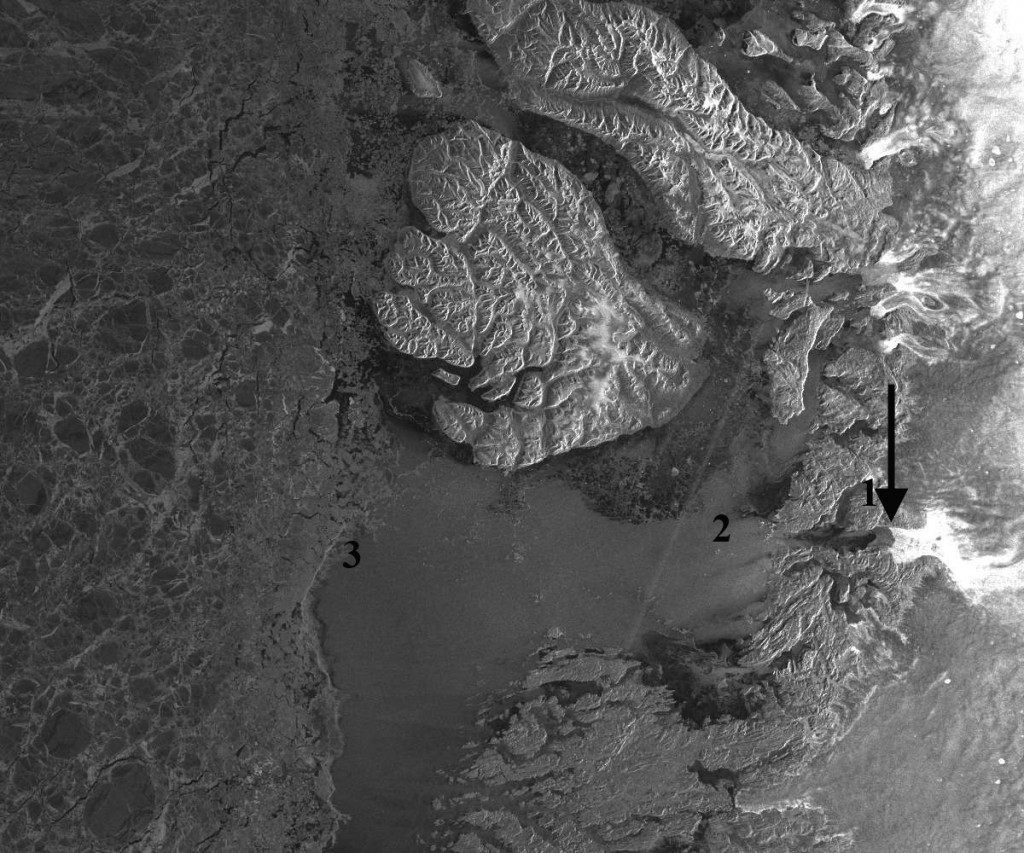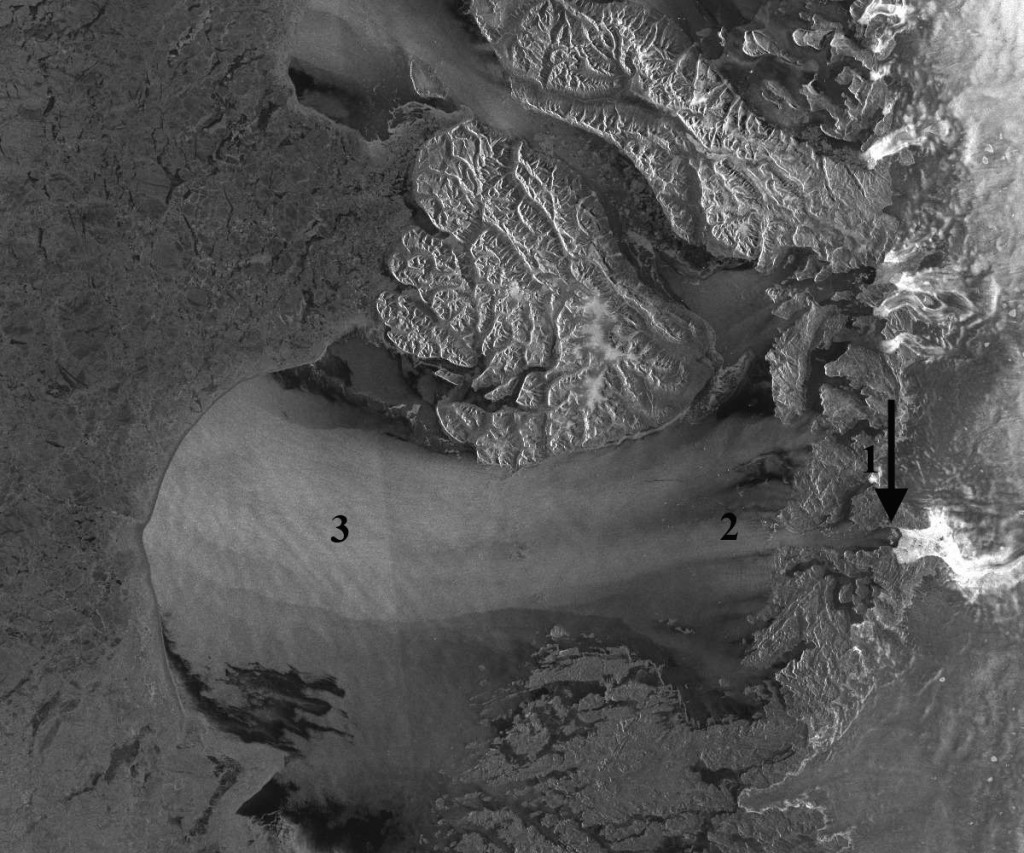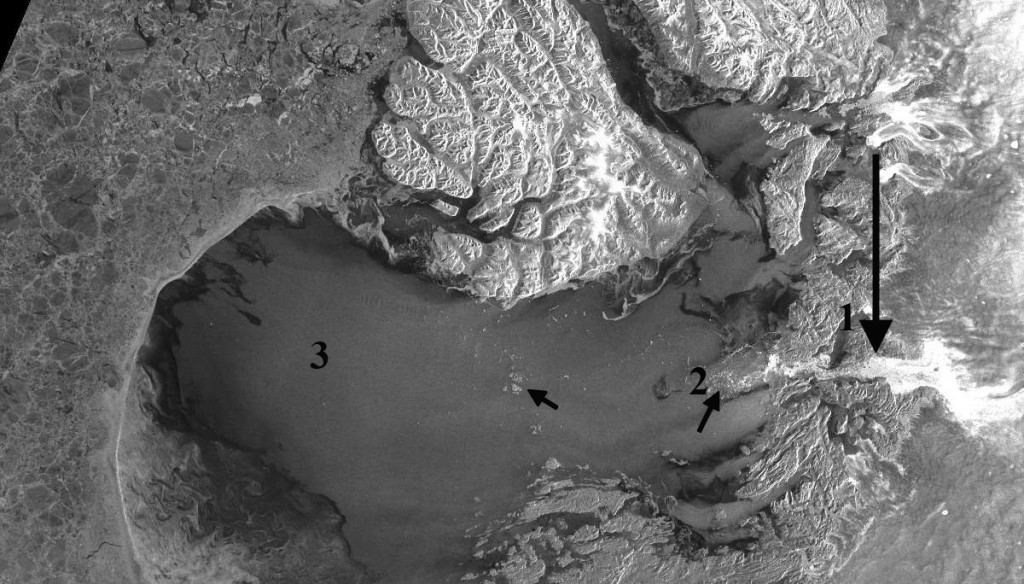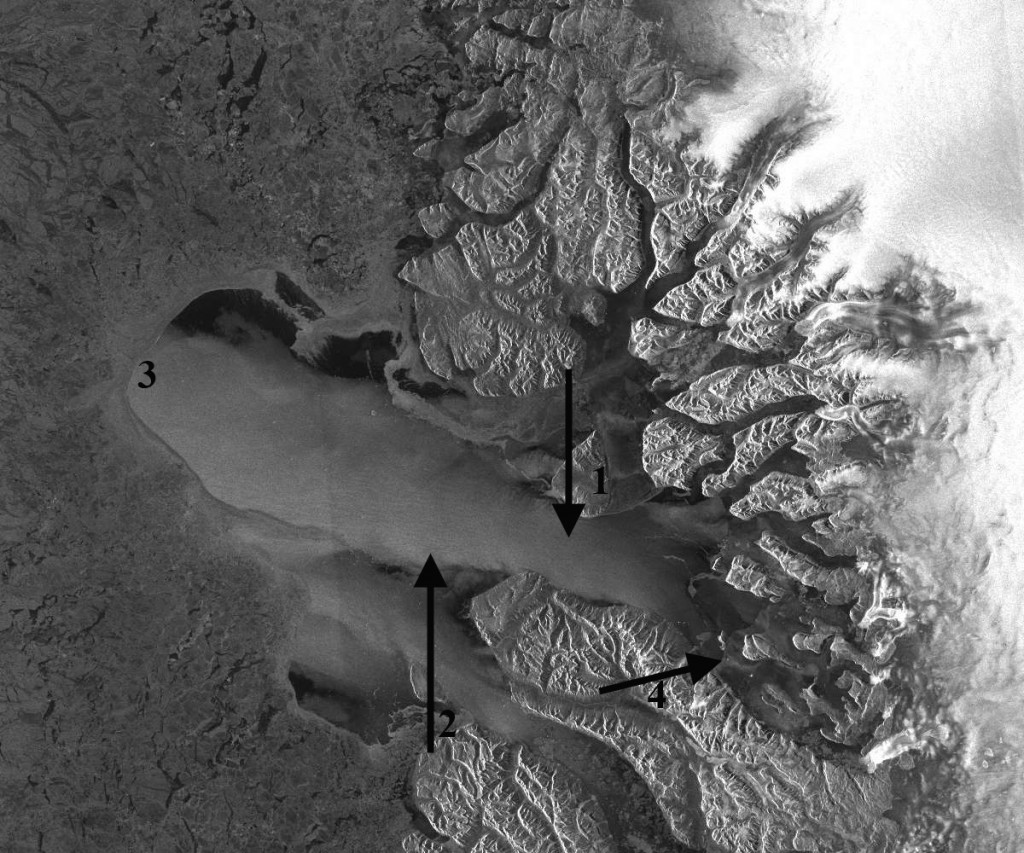Environment & Energy
Related: About this forumNot Just Jakobshavn; January Mass Outflow Event Apparently Involved At Least 2 Glacier Tongues
@TenneyNaumer contacted Alun Hubbard, Jason Box and me with an astute observation last evening: “But what I am getting at is that in general the temperature anomalies over the region of Jakobshavn have been high in the last few days, and I spotted weird temperatures off the coast via Climate Reanalyzer (which is seriously low resolution). I just checked with the manati satellite (also seriously low resolution), and it seems some sort of event has taken place.”
Following up on what are typically good observations from Tenney, I looked at the Radarsat-2 and Sentinel-1 imagery posted by the Danish Meteorological Institute. Weather records from automatic weather stations in the region from PROMICE and the surface mass balance model results for the week from Polar Portal.
The arrow at location 1# is an area of sea ice across the fjord in front of Jakobshavn Glacier on January 9 that disappears by January 13. Location #2 is at the fjord mouth, and location #3 is at the sea front south of Disko Island on January 9. There is no real cloud cover evident in any of images. Maybe low-level fog in places. By January 11th, a plume is sweeping from Point 2 towards Point 3. Notice the sea ice in the fjord disappears by January 13th, and the ice front is pushed back in a concave fashion at Point #3. This indicates a clear push of water driving sea ice offshore. (The Ilulissat Fjord mouth lack of ice is also evident in Webcam images from 01/1/16 and 01/17/16 at the Hotel Arctic, with the last images, below, showing two boats plying the open water on the 16th and icebergs clogging the fjord mouth on the 17th.)
The Sentinel-1 image from January 16th shows a significant flushing of icebergs from Ilulissat Fjord, pointed out by black arrows. This image has better clarity and, with the icebergs scattered through the plume, indicate more clearly the plume is a water source change event, even if wind driven. The iceberg plume in the fjord has a brighter aspect due to the varied surface aspect-reflectance and has expanded down fjord. The event must be due to or enhanced by strong offshore winds and @ruth_mottram indicates there was at least one foehn event [Readers, best to read what these are: https://en.wikipedia.org/wiki/Foehn_wind]. The plume indicates the ice melange in front of Jakobshavn has largely been removed.
In Uummannaq Bay, a very similar sequence plays out; note on January 9 the sea ice connecting islands near #4. By January 13th, the ice at location #4 is gone. The ice front is now at location #3, which on January 9th was well into the ice pack. Again, we have a clear push of water leading to a concave sea ice front that is pushed well offshore. Icebergs can be seen amidst plume on January 16th; the plume opacity and size has diminished since January 13th.
In both of the January 13th images, there is a plume leading to the concave sea ice front, the question being is this sediment-laden water, with the resultant higher reflectivity, or is it a combination of a surface water change from wind or a combination? Jason Box suggests it is aeration of the surface water from the strong offshore winds. The ice must in part be driven back by a surface water push. You can see icebergs in sections of the plumes closer to shore suggesting this is a surface near surface phenomenon. This is a short-term event. However, it could have broader implications; Moon et al. (2015) indicate the importance of a rigid ice melange at the front of tidewater outlet glaciers in Greenland. In this case, the ice melange in front of Jakobshavn has been removed, and probably from in front of other glaciers. I look forward to further insights from the community.

RADARSAT-2 image of Disko Bay, 01/09/2016.

RADARSAT-2 image of Disko Bay, 01/11/2016.

RADARSAT-2 image of Disko Bay, 01/13/2016.

Sentinel-1 imagery of Disko Bay, 01/16/16. Notice expanded brightness area in the fjord by #1.

Sentinel 1 imagery of Uummannaq Bay, 01/09/2016.

RADARSAT-2 image of Uummannaq Bay MODIS, 01/13/2016.

Sentinel 1 imagery of Uummannaq Bay, 01/13/2016, with plume size and opacity diminishing.
EDIT
http://blogs.agu.org/fromaglaciersperspective/2016/01/17/what-is-up-in-disko-ummanaq-bay-greenland-this-week/
EDIT/END
http://climatechangepsychology.blogspot.com/2016/01/mauri-pelto-what-is-up-in-disko.html
daleanime
(17,796 posts)2naSalit
(86,646 posts)pscot
(21,024 posts)Last edited Sun Jan 24, 2016, 10:39 PM - Edit history (1)
Krup made them.